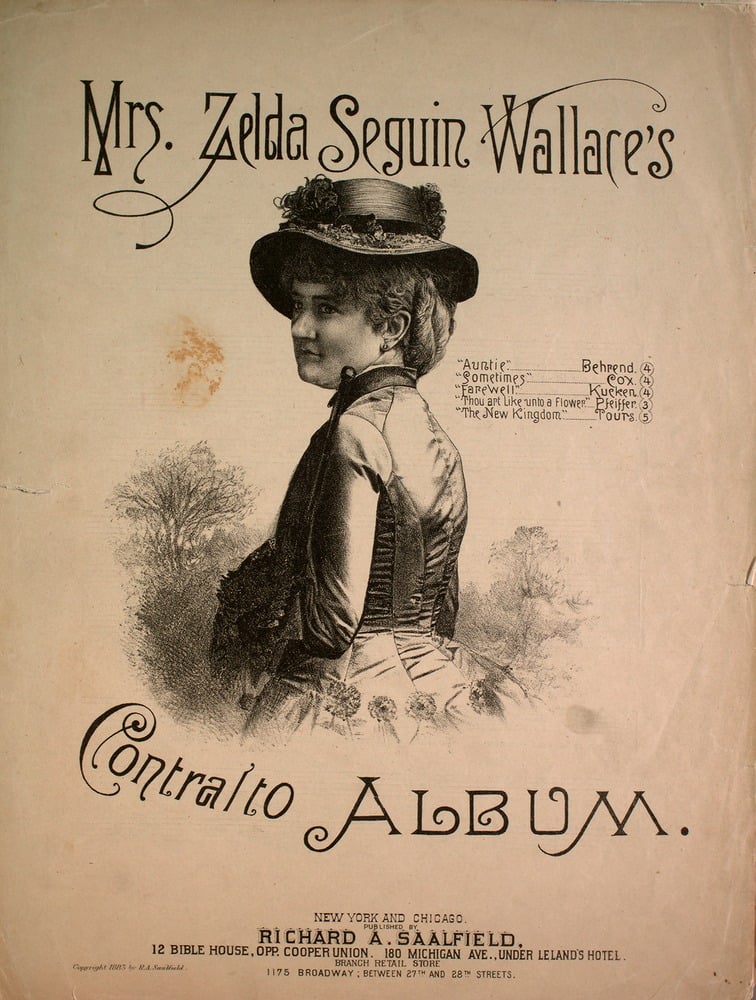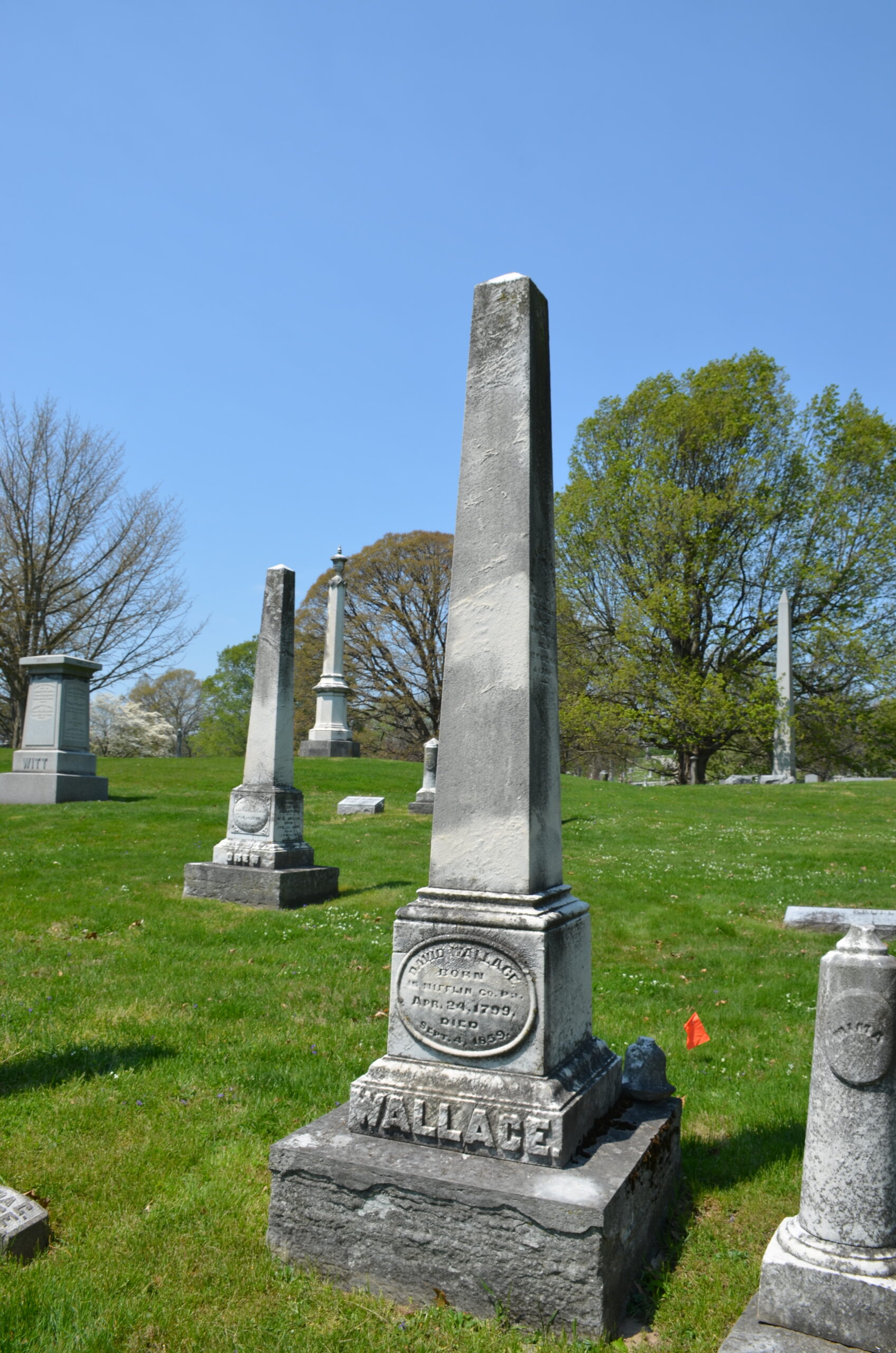Zelda Wallace (1848-1914)

Born in New York City in 1848, Zelda Harrison Seguin Wallace became one of the most famous opera singers of the 1860s through the 1880s. Wallace, a contralto, made her stage debut in Saratoga, New York, when she was just 17. Her opera roles included The Bohemian Girl, the first English version of Carmen, and The Mikado. Her appearance in that opera in New York City in 1886 was her last major performance.
She had studied voice under Anne Seguin, a well-known opera teacher of the time who had sung at the coronation of Queen Victoria. While studying, Zelda met Seguin’s son, Edward Jr., also an opera singer. The two fell in love and married in 1867. Ten years her senior and an experienced performer, he taught her about stage presence and acting, and they toured and performed around the country. Zelda gave birth to the couple’s only child in the 1870s, Edward S.R. Seguin. Then, while they were on tour with an opera cast, her husband died in October 1879.
She was in Indianapolis in February 1880 when a mutual friend introduced her to David Wallace Jr., the son of former Indiana Governor David Wallace and the brother of the author, General Lew Wallace. Within months, Wallace took time off from his job as Master of Transportation for the Indianapolis-Terre Haute Railroad to go to New York and propose. They married that August, Zelda giving up $20,000 she would have inherited from her former mother-in-law on the condition that she would not remarry. The couple lived in Indianapolis and had a son in October 1881. Named David, he died about a year later and is buried in Crown Hill Cemetery.
Wallace became active in the social life of Indianapolis and provided songs for events sponsored by her suffragist mother-in-law, Zerelda Wallace (buried in Crown Hill Cemetery). Quietly supporting that cause, she didn’t speak about it often, but when she did “she expressed her opinion with an effective eloquence as charming as her marvelous voice. To hear her sing, you would think she was made for that alone; to hear her talk you would wonder at the naturalness of manner and clear, unsullied mind.” She eventually returned to opera and then to concerts at important venues around the country until she was seriously injured in a train wreck near Coatesville, Indiana, in 1895.
Wallace recovered enough to give small programs to support charities. But in early 1911, a fire destroyed all her costumes and memorabilia. This was quickly followed by David’s death that May. In the midst of mourning, she made a trip to New York to visit her son Edward. There she gave several interviews, reminiscing about her career. She passed away in Indianapolis in February 1914.


